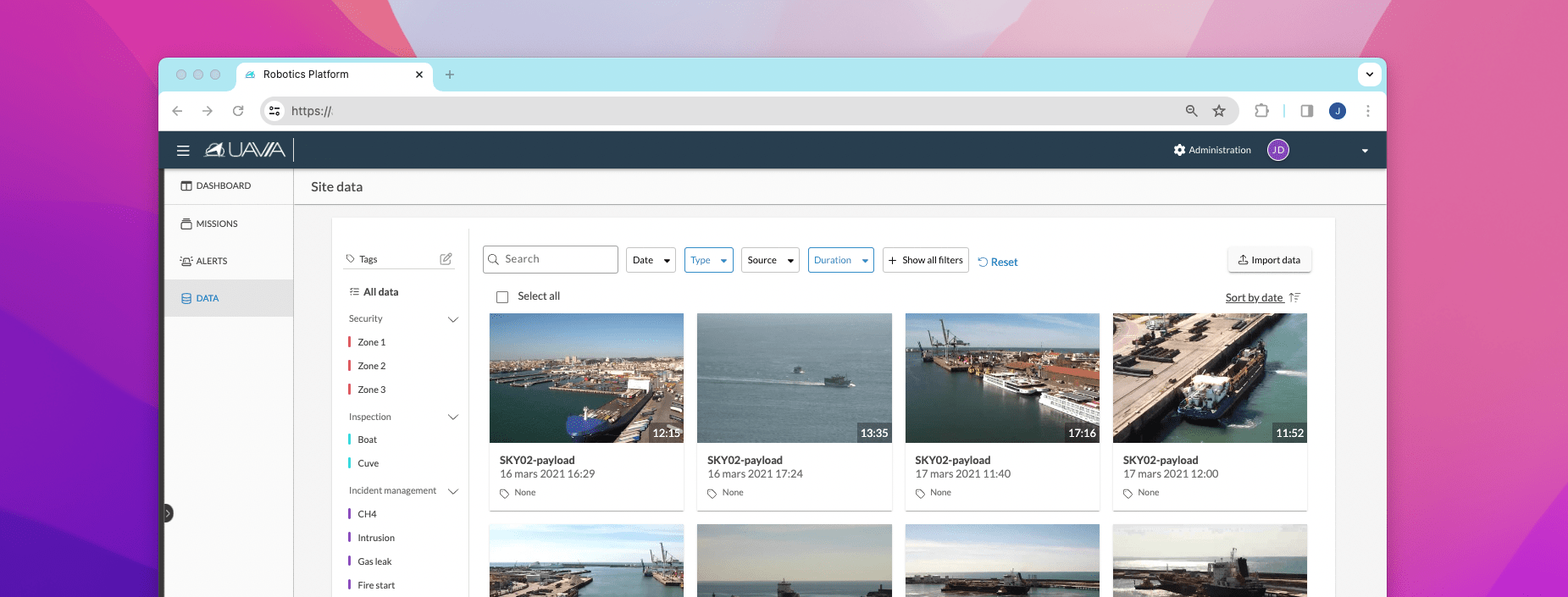
To operate drones through the Uavia Platform, does it require piloting skills?
No, “Uavia inside” drones are considered autonomous in the sense that the pilot’s skill is carried by the system itself. The drones operate within a secured flight envelope. A simple training is necessary to handle the web application.
Is the Uavia platform compatible with all civilian drones on the market?
The platform is compatible with a wide range of drones: drones with docking stations, multi-rotor drones with various payloads, tethered drones, etc. In terms of manufacturers, it is compatible with the major families of autopilots including DJI, Parrot, Ardupilot, and PX4.
How to comply with European regulations?
Uavia is a technology provider. It is up to the user client (drone operator) to ensure compliance with local regulations where they operate.
Drawing from its experience through various collaborations and obtaining several Specific Operations Risk Assessments (SORA) on its own, Uavia is able to support its clients in their authorization requests.
What type of communication is used by the drone?
In most cases, “Uavia inside” drones are equipped with an LTE modem (4G or 5G) to transfer both business data (videos, structured data, etc.) and data required for flight supervision.
Is your platform compatible with the U-Space standard?
Uavia is already working on integration with U-Space service providers in European Union countries and aims to standardize this integration to be compatible with all future U-Space service providers.
Is the system capable of securely transmitting real-time data?
Absolutely, with imperceptible transmission delays and encryption of the transmitted data.
Is the Uavia Platform a SaaS platform?
We prioritize deploying the platform directly into our clients’ information systems so they have full control over their data. However, clients can still turn to their IT integrator(s) to provide the service. Uavia supports both approaches.
What types of sensors can be integrated into “Uavia inside” drones?
There are no restrictions in terms of computing. Uavia has the expertise to develop drivers to manage all types of sensors: video camera, thermal camera, radiation sensor, electrochemical cell, spectrometric analyzer, etc.
In the case of a specific need, attention will also focus on the weight and size of the sensor, which have more of an impact on the choice of the carrier.
Can we process data directly in the drone?
Yes, DroneOS is notably capable of running real-time automatic detection models through edge computing. Some flight scenarios currently in production implement a loopback of the data captured on autonomous navigation to optimize missions.
